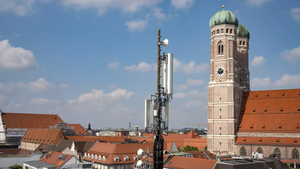
SINGAPORE -- 5G Asia -- Asian telcos have no trouble identifying 5G use cases, but they admit they're struggling when it comes to business cases.
From the stage at 5G Asia in Singapore Wednesday, industry execs from across the region shared details of 5G services they have been building.
NTT DoCoMo, set to launch its 5G "pre-service" in a week's time, showed off humanoid robots driven by haptic sense remote control, real-time music gigs with performers in multiple locations and an AR app that enables vehicle passengers to share their experience with people elsewhere.
Two local telcos, Singtel and M1, are testing out 5G-based automation and remote-control use cases in Singapore's giant port. HKT is building a 5G private network for the Hong Kong Airport Authority.
But the operators agreed they are still unclear about how to monetize 5G in both consumer and enterprise segments.
Wing Lee, CEO of Malaysian cellco YTL, which is running a limited mmWave trial in partnership with Facebook's Terragraph, believes the high cost of the technology itself is a barrier.
5G isn't yet cost-effective to deploy nationwide, he said. "If you do 5G at scale, the unit cost is not there. If you jump too early you get locked into very high unit cost."
For consumer apps, the problem is that customers "won't pay a cent more" than they are paying for 4G, execs agreed.
So operators need to reframe their business, said Singtel's managing director of networks, Tay Yeow Lian.
"We cannot continue to sell data connectivity," he said. "It's about the experience. The consumer is buying a service that they desire, not buying a data package for consumption."
Want to know more about 5G? Check out our dedicated 5G content channel here on
Light Reading.
On the upside, some 5G-powered tech substituting directly for legacy practices can deliver immediate savings, a Huawei VP, Mohamed Madkour, pointed out.
For example, an outdoor TV broadcast, which conventionally requires a dedicated $10 million van, can now be done with a $10,000 backpack, while an automated mine in central China has eliminated casualties and is saving $5 million a year, he said.
Azizi Hadi, chief network officer, Telekom Malaysia, cited some 4G industrial IoT use cases that had been also worked well in 5G trials, including a smart traffic management system that was initially sold as equipment but is now delivered as a service.
But a recent Ovum survey of telcos revealed that one of their biggest anxieties about 5G is their lack of knowledge of industry verticals. They need to find ways to collaborate to build and deliver the new use cases.
Takehiro Nakamura, general manager of NTT DoCoMo 5G Labs, said it was working with 2,800 partners from verticals ranging from manufacturing to retail and local government on its 5G trials.
But DoCoMo had yet to find a way to effectively "identify the business model and monetize with our business partners."
Revenue sharing with partners was one potential model, he said. "But how to share? That is the challenge."
— Robert Clark, contributing editor, special to Light Reading
Read more about:
AsiaAbout the Author(s)
You May Also Like


.jpg?width=300&auto=webp&quality=80&disable=upscale)









